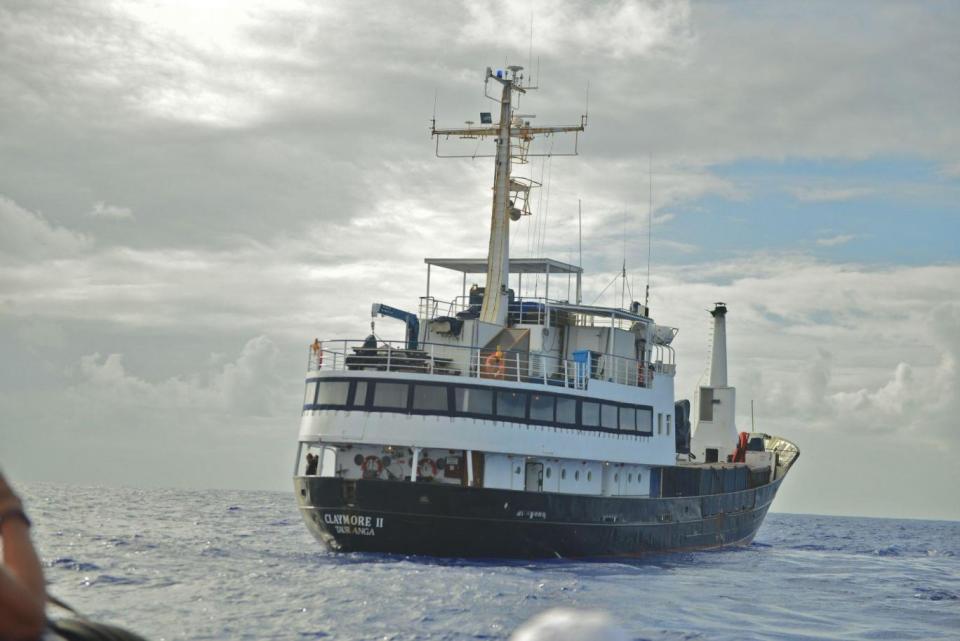Splendid isolation: a Bounty-hunter finds his paradise in Pitcairn

Pitcairn’s longboat lurches through the inky-blue swell as it comes from the island to greet us. We’ve spent the past 32 hours aboard the six-cabin Claymore II , sailing from French Polynesia to reach the UK’s sole Pacific Ocean territory. Among those on board are five tourists: a seasick Chinese couple, two American missionaries and me.
Pitcairn has just celebrated the 250th anniversary of being named by midshipman Robert Pitcairn, who spotted it from aboard HMS Swallow in 1767. But it’s better known, of course, for Mutiny on the Bounty — and the longboat is crowded with the descendants of mutineers who commandeered HMS Bounty from Lieutenant William Bligh before settling here in 1790.
“Half the island’s population is in the longboat,” jokes Mike Lufton-Christian, a fellow passenger on the Claymore II , who’s returning from Tahiti. He would know — he married into Pitcairn’s most prominent family, the descendants of Fletcher Christian.
He points towards the rocky shoreline where the Bounty first anchored. “The mutineers torched the ship and sank it to avoid being detected by the British Navy. Fletcher Christian suspected Bligh would come after them,” he says. Pitcairn’s ageing population of 42, including just four schoolchildren, is desperate for new migrants. Even recent inducements of free land leased by Her Majesty’s Government has not attracted new arrivals. Pitkerners will tell you the fallout from sex-abuse trials in the mid- 2000s has deterred newcomers. But this sub-tropical island is a very different place today.
So what would I find? A dwindling chastened population or the resilient survivors of a nautical saga that had fascinated me since childhood?

There are no guesthouses on Pitcairn; I lodge with Nadine and Randy Christian and their three children. My annexe is self-contained so I can wander about their house and eat with the family.
Despite this isolated hunk of volcanic rock being scarcely three kilometres long, my days are filled exploring its history and striking seascapes. Ochre-coloured dirt tracks wend their way through breadfruit, mango, banana and banyan trees. For savage beauty there’s a black lava dyke pounded by turquoise Pacific waves that encloses a lime-green saltwater pool called St Paul’s.
In the world’s smallest capital, Adamstown, I find an engaging museum with memorabilia from the Bounty including Bligh’s Bible. Later I seek out the only known grave of the original nine mutineers who landed here: that of John Adams, who died in 1829.
Showing me around is Melva Evans, who traces her heritage back six generations to Fletcher Christian. She returned five years ago after decades in the US, part of a global diaspora of around 5,000 Pitkerners. “Pitcairn is in my blood,” she says. “I wake up to cleanair and blue ocean, and grow what I want in my garden to eat. The clock is ticking for us if we don’t get new people.”

Most Pitkerners are happy to natter about island life, its politics and to whom they’re related. Within days I can name three-quarters of the population — not so hard when most surnames are Christian, Warren, Brown or Young. Becoming a temporary part of this community is what makes visiting Pitcairn unique. One day I join them for communal swimming. The next the shortwave radios crackle into life to announce a dinner to celebrate a birthday. The feast includes pilai, a green-banana staple, and “fishballs” prepared from fresh wahoo. In an echo of St Helena, its fellow British Overseas Territory, developing tourism is a way to create jobs for Pitcairn’s younger population.
A new passenger ship, planned for next year, is expected to offer 50 berths to replace Claymore II ’s six cabins, and the island is lobbying to attract more cruise ships so they can sell passengers their trinkets of wood carvings, postage stamps and honey. The Pitkerners’ unique isolation is reinforced as I sail away after four days, watching the island diminish to a pinprick on the horizon. I imagine “Land ahoy!” being yelled from the crow’s nest of the Bounty sailing in the opposite direction. Its crew never dreamed how their legacy would endure.
Details: Pitcairn
Most visitors arrange their trip via the Pitcairn Islands’ travel co-ordinator (tourism@pitcairn.pn), who will book the Claymore II and arrange lodging. Air Tahiti Nui (airtahitinui.co.uk) flies from London to Tahiti via Paris from £1,530.
From there, take Air Tahiti (airtahiti.com) to Mangareva to connect with Claymore II. The boat trip costs £2,840 return. visitpitcairn.pn

 Yahoo News
Yahoo News 
